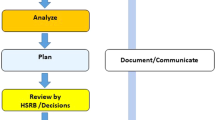Abstract
The National Aeronautics and Space Administration (NASA) has been conducting an investigation of human interaction with critical elements of NASA’s Launch Termination System (LTS). This safety-critical system requires quick decision making on the part of highly trained users in order to maintain safe launch operations. A team of NASA evaluators has completed a detailed assessment aimed at improving the Graphical User Interface (GUI) of NASA’s Range Data Display System (RDDS), a key component of the LTS. The RDDS forms the vital man-machine link which ingests high volumes of system data in real-time and displays this data to NASA’s Range Safety personnel to enable them to assess launch vehicle trajectory and performance status. The RDDS displays the real-time state of the launch vehicle and its complex subsystems to users in order to support arm/destruct decisions (made by NASA’s Range Safety personnel) to facilitate safe launch operations. These decisions are highly time-sensitive, and users must act quickly in order to prevent serious injury or death and extensive damage to equipment or property. The NASA assessment team performed a Cognitive Task Analysis (CTA) to derive the user informational requirements needed to develop data driven, user information software requirements in support of a new RDDS software upgrade. The CTA was designed to address the unique aspects of this particular system, while focusing on the operational context within which the system is used by highly specialized personnel. This analysis and the resulting requirements form the first step in providing human factors guidance to software developers throughout the design, development, and fielding of the new RDDS software GUI. This paper will focus on the applied human factors methods and techniques employed, how these methods and techniques were used to derive user information design requirements, the lessons learned from this activity, and areas for future work. The authors intend to provide human factors practitioners with an example of how CTA methods and techniques may be adapted to meet the particular needs of a project, with special consideration given to the design of safety-critical systems.
Access this chapter
Tax calculation will be finalised at checkout
Purchases are for personal use only
Similar content being viewed by others
References
Davis, R.A., et al.: Overview of the NASA wallops flight facility mobile range control system. Technical Memorandum, NASA (1999)
Hoffman, R.R.: Protocols for Cognitive Task Analysis. Technical report, State of Florida Institute for Human and Machine Cognition (2005)
Hoffman, R.R., Crandall, B., Shadbolt, N.: Use of the critical decision method to elicit expert knowledge: a case study in the methodology of cognitive task analysis. Hum. Factors 40(2), 254–276 (1998)
Militelo, L.G., Hutton, R.J.: Applied cognitive task analysis (ACTA): a practitioner’s toolkit for understanding cognitive task demands. Ergonomics 41(11), 1618–1641 (1998)
Human Systems Integration (HSI) Practitioner’s Guide. NASA/SP-2015-3709 (2015)
Range Safety Manual for Goddard Space Flight Center (GSFC) Wallops Flight Facility (WFF). RSM-2002C (2013)
Range Flight Safety Program. NASA-NPR-8715.5A (2012)
Software Safety Standard. NASA-STD-8719.13C (2013)
Underwood, B.E.: The wallops flight facility model for an integrated federal/commercial launch range. Technical Paper, American Institute for Aeronautics and Astronautics (AIAA) (1999)
Global Positioning and Inertial Measurements Range Safety Tracking Systems’ Commonality Standard. Range Commanders Council, US Army White Sands Missile Range (2001)
Range Safety User Requirements Volume 1 - Air Force Command Range Safety Policies and Procedures. United State Air Force Space Command (2016)
Range Safety User Requirements Volume 2 - Air Force Command Range Safety Policies and Procedures. United State Air Force Space Command (2016)
Situation Awareness Information Requirements for En Route Air Traffic Control. US Department of Transportation, Federal Aviation Administration (1994)
Brooke, J.: SUS: a “quick and dirty” usability scale. In: Jordan, P.W., Thomas, B., Weerdmeester, B.A., McClelland, I.L. (eds.) Usability Evaluation in Industry, pp. 189–194. Taylor and Francis, London (1996)
Bangor, A., Miller, J., Kortum, P.: Determining what individual SUS scores mean: adding an adjective rating scale. J. Usability Stud. 4, 114–123 (2009)
Acknowledgements
The assessment team would like to thank the WFF RDDS Software and Range Safety organizations for their time, assistance, and support in the completion of this effort. The assessment team would also like to thank the NASA Engineering and Safety Center (NESC) for funding this assessment to apply human factors techniques to this safety critical component of the Wallops Flight Facility Launch Termination System.
Author information
Authors and Affiliations
Corresponding author
Editor information
Editors and Affiliations
Rights and permissions
Copyright information
© 2019 Springer International Publishing AG, part of Springer Nature (outside the USA)
About this paper
Cite this paper
Daiker, R., Ghatas, R., Vincent, M., Rippy, L., Holbrook, J. (2019). A Cognitive Task Analysis of Safety-Critical Launch Termination Systems. In: Stanton, N. (eds) Advances in Human Aspects of Transportation. AHFE 2018. Advances in Intelligent Systems and Computing, vol 786. Springer, Cham. https://doi.org/10.1007/978-3-319-93885-1_19
Download citation
DOI: https://doi.org/10.1007/978-3-319-93885-1_19
Published:
Publisher Name: Springer, Cham
Print ISBN: 978-3-319-93884-4
Online ISBN: 978-3-319-93885-1
eBook Packages: EngineeringEngineering (R0)




